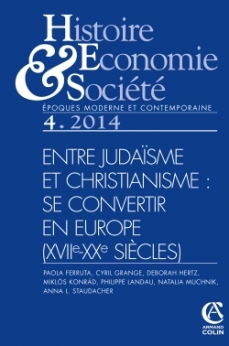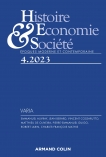
Histoire, économie & société (4/2014)
Pour acheter ce numéro, contactez-nous
Recevez les numéros de l'année en cours et accédez à l'intégralité des articles en ligne.
Pendant les années 1870 et 1880, les femmes juives sont très représentées dans les mouvements de gauche qui ont émergé en Russie. Dans cet article, nous explorons les origines sociales, les expériences de vie, et les motivations des femmes attirées par la politique socialiste à cette époque. Nous portons une attention particulière à la mixité sociale parmi les militants, et établissons un modèle de romances judéo-nobles qui figure aussi dans les salons dans d’autres époques et villes. Quatre notes biographiques approfondissent ce que nous pouvons apprendre des statistiques. Les femmes mises en exergue sont Gesia Gelfman, Anna Kuliscioff, Anna Epshtein et Rosalie Idelson.
During the 1870s and 1880s, Jewish women were strongly represented in the left movements which emerged in Russia. In this article we explore the social origins, the life experiences and the motives of the women drawn to socialist politics in this era. We pay special attention to the social mix among the activists, and point to a pattern of Jewish-noble romances occurring in the salons of other epochs and cities. Four biographical sketches expand what we can learn from the statistics. The women highlighted are Gesia Gelfman, Anna Kuliscioff, Anna Epshtein and Rosalie Idelson.

